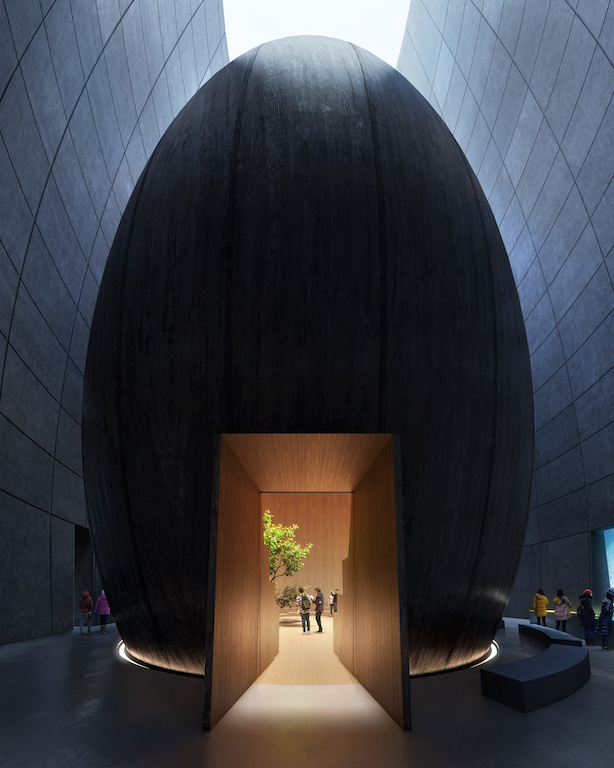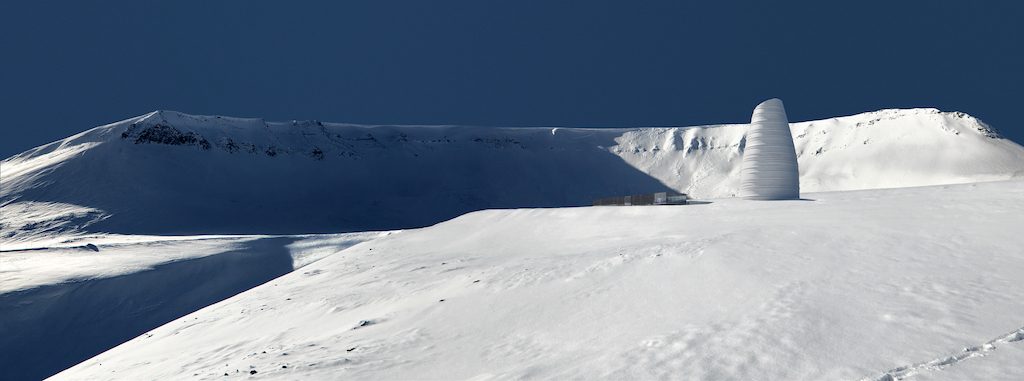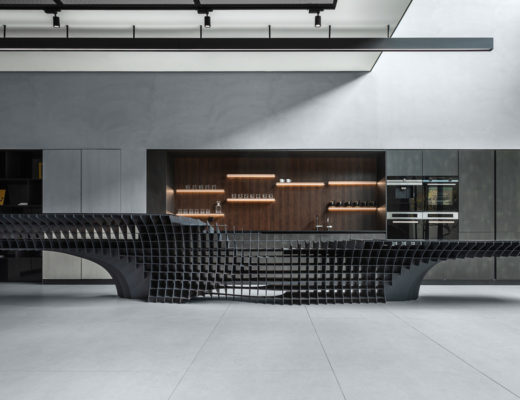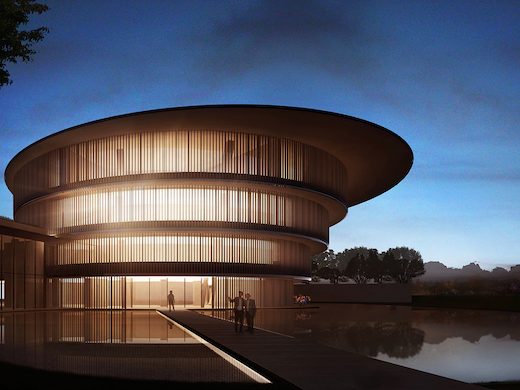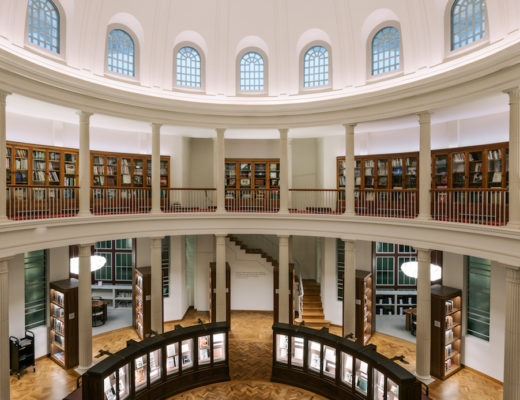Norwegian architecture firm Snøhetta has designed a new visitor center for Arctic preservation storage called The Arc in Svalbard off the coast of Norway. At 78° north of the Earth’s equator, the project referencing its location in the Arctic and its function as an archive for global flora preservation. Commissioned by Arctic Memory AS, the visitor center will showcase content from the Svalbard Global Seed Vault – the world’s largest secure seed storage.
In collaboration with the Norwegian Natural History Museum, the visitor center will also provide insights into how the Svalbard Archipelago’s unique geology has transformed over millions of years. It will showcase both the Seed Vault and the Arctic World Archive – a vault that aims to preserve the world’s digital heritage.
The architecture divides the visitor center into two separate volumes; the entrance building and the exhibition building. The former contains visitor functions such as the lobby, ticketing, wardrobe and a café, as well as production facilities for the Arctic World Archive and technical rooms.
“A structural frame of cross-laminated timber in combination with stiffening wall discs in solid wood forms a rectangular building volume that rests on pile foundations in the bedrock. The building is suspended off the ground to prevent heating of permafrost and accumulation of snow. The entrance building is clad with burnt wood and dark glass panels, while the interiors consist of exposed wood elements. Roof areas are designed to accommodate solar panels for harvesting solar energy,” explains Snøhetta team.
While the entrance building is rational and stoic, the exhibition building expresses a unique shape, scale and spatial sequence, designed as a timeless, scale-less form that is both familiar and otherworldly at the time. From the outside, the exhibition building appears as a robust monolith – its outer surface formed by the erosion of the site’s unique and often extreme weather conditions. Access to the exhibition building occurs across a glass access bridge, which is used to organise visitors into smaller groups. The contrasting volumes are designed to give visitors the experience of going from a familiar entrance into a real vault inside the permafrost of Svalbard.
At the core of the vertical vault of the exhibition building forms a powerful digital archive where both permanent and temporary exhibits are experienced first-hand. From floorboards at the ground level visitors can visually retrieve what is stored inside the Arctic World Archive and the Svalbard Global Seed Vault.
Content stored in these vaults currently spans from Edvard Munch’s art collection and the Vatican’s 1 500-year-old manuscripts, to film clips of the Brazilian football player Pelé and the largest collection of the world’s seeds. The vault is kept at four-degree Celsius and has muted lighting to further amplify the experience of being inside one of the real vaults. The vaults’ content can be experienced through projections on the walls, managed by touch screens, VR experiences and other physical and digital exhibit elements, developed in close collaboration with storytelling agency, Tellart.
Inside the vault lies the ceremony room, a conditioned auditorium that can be used both for digital projections, deposit ceremonies for the vaults, lectures and talks, as well as for individual contemplation and reflection. The centerpiece of the ceremony room is a large deciduous tree representing the vegetation that has previously grown on Svalbard, where leaf fossils of both ancient trees (Metaseqoia and Ginko) and more well-known deciduous trees have been found dated back more than 200 million years. At the current rate of carbon emissions, temperatures could rise high enough for a forest to grow again on Svalbard within only 150-200 years.
The tree in the ceremony room is both a symbol of the past and a call to action – a living icon for global warming and our responsibility to preserve the Arctic, and all of nature, for future generations.
The Arc aims to educate visitors and inspire innovative preservation solutions for the world’s food and digital resources. It further emphasizes the value of the unique climatic and political stability one finds beyond the Arctic Circle, in the permafrost of Svalbard, serving as a reminder of how we should take care of the world’s resources for future generations to come.


